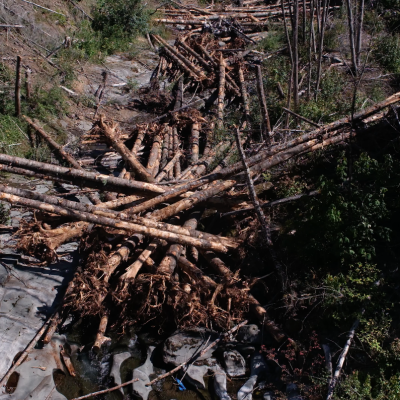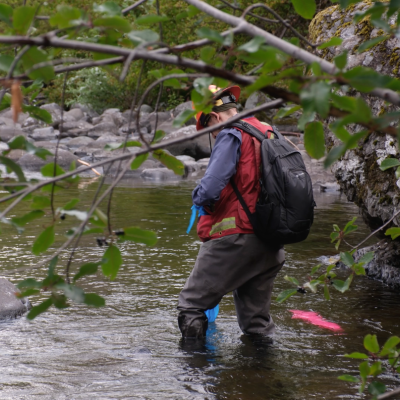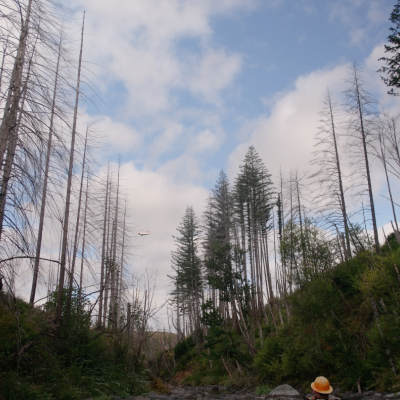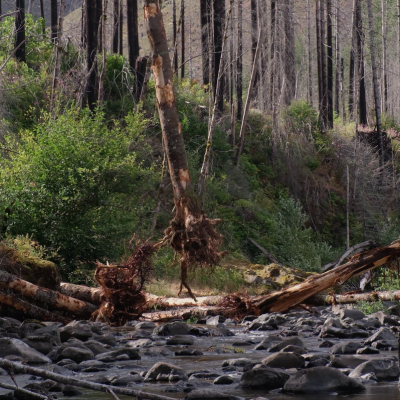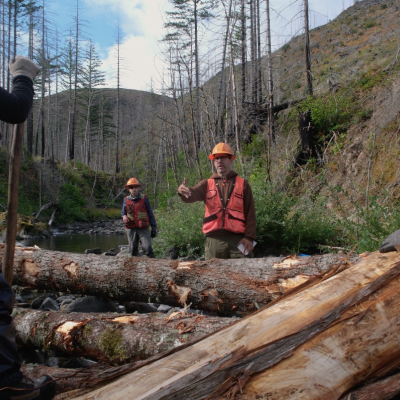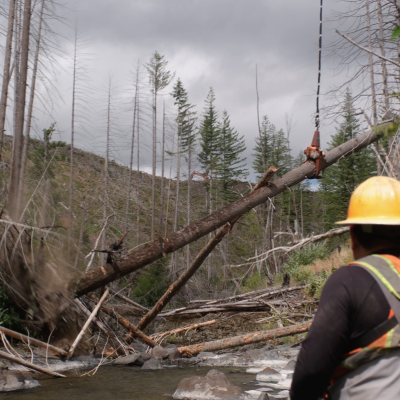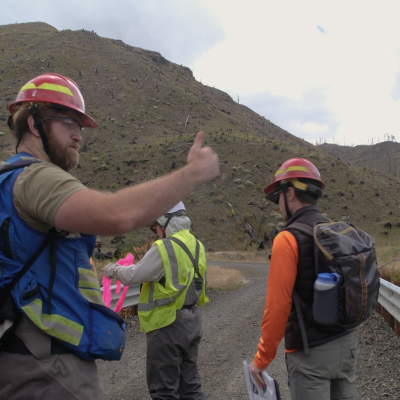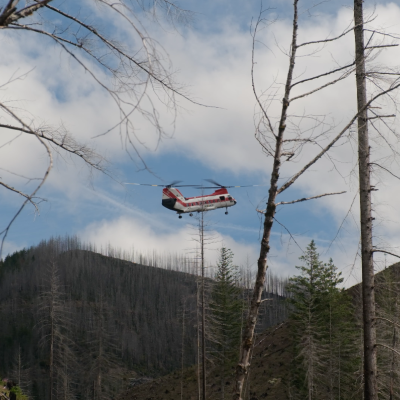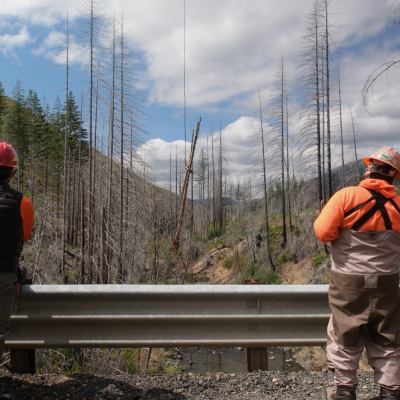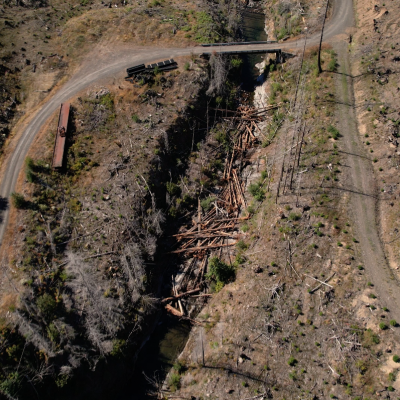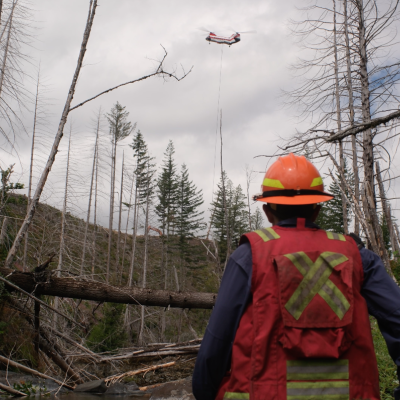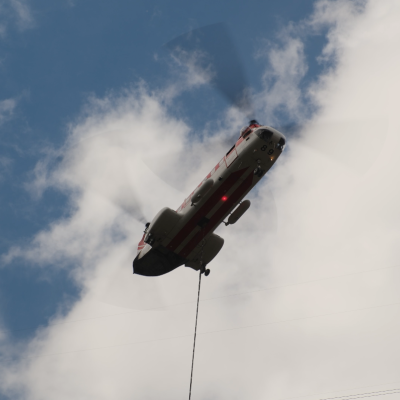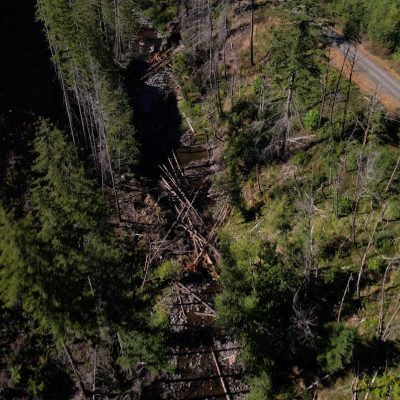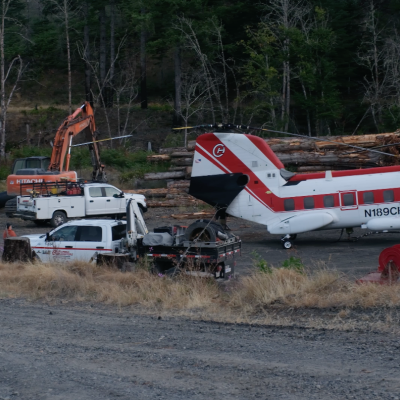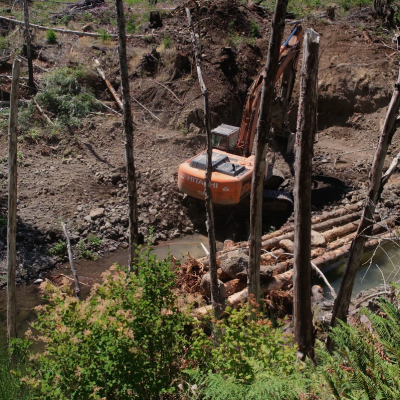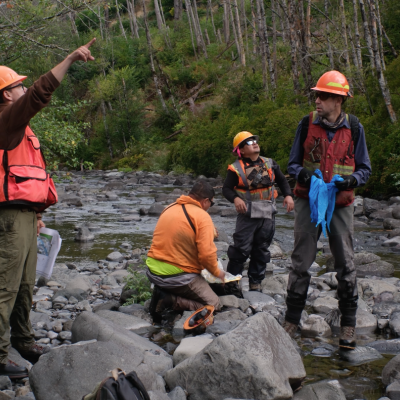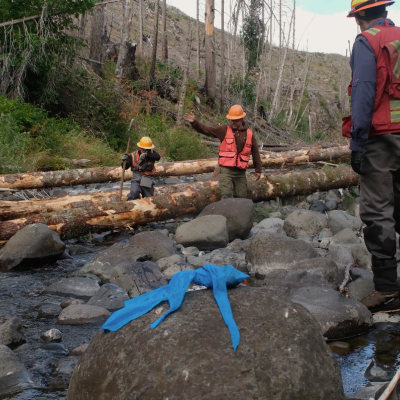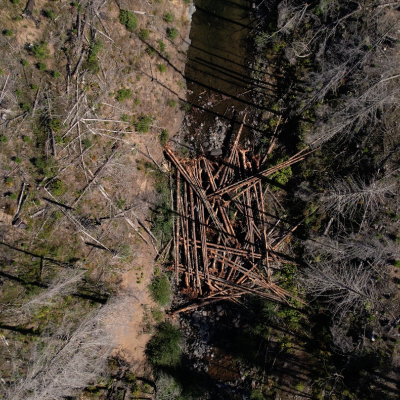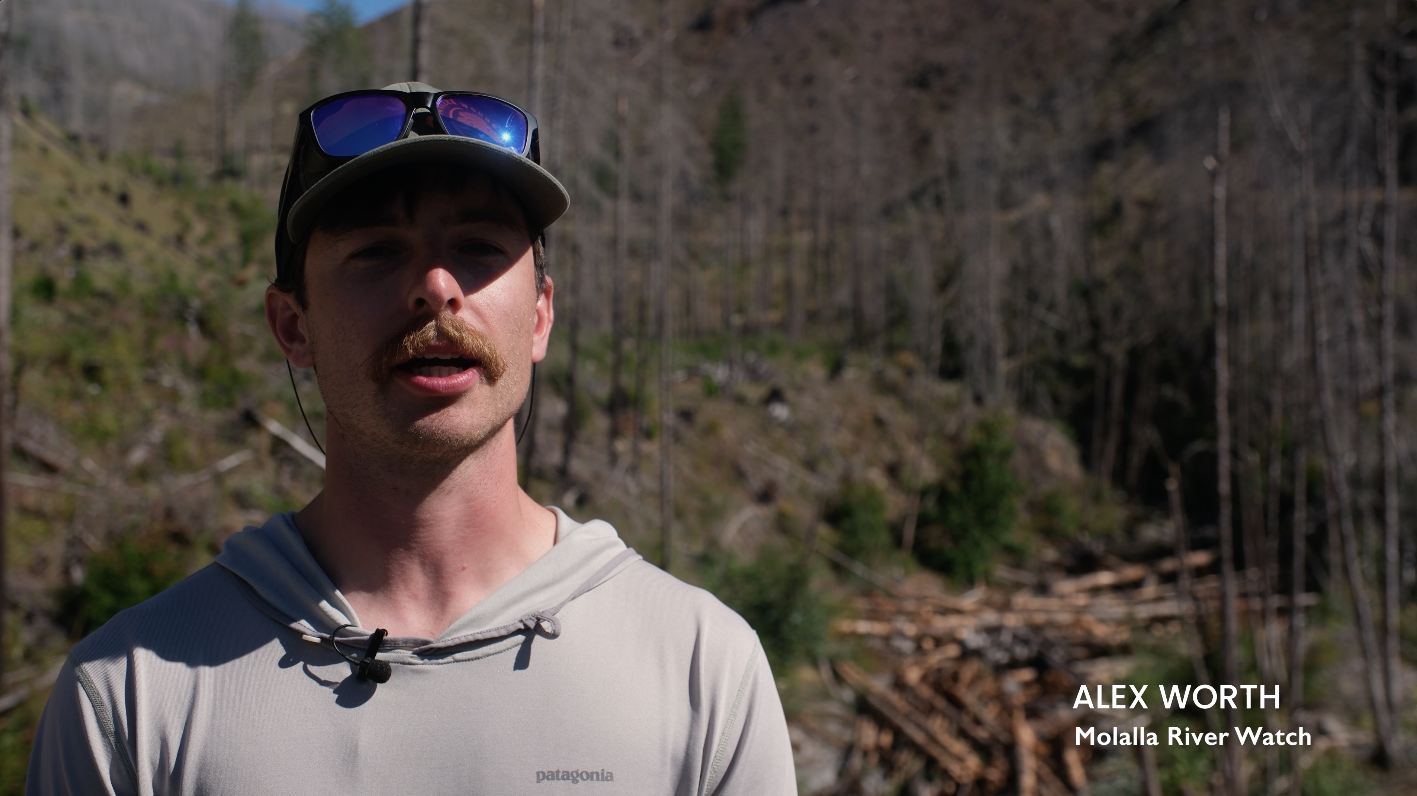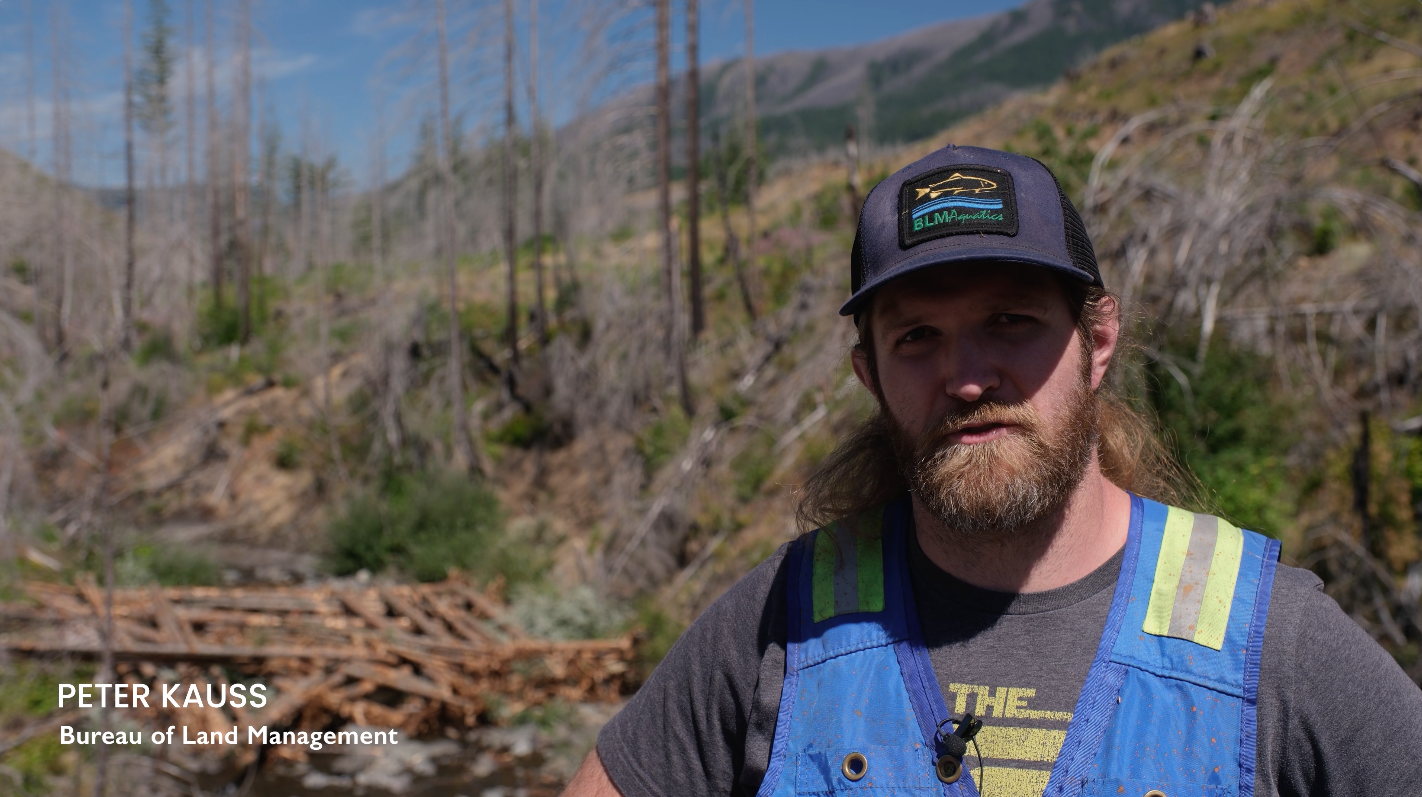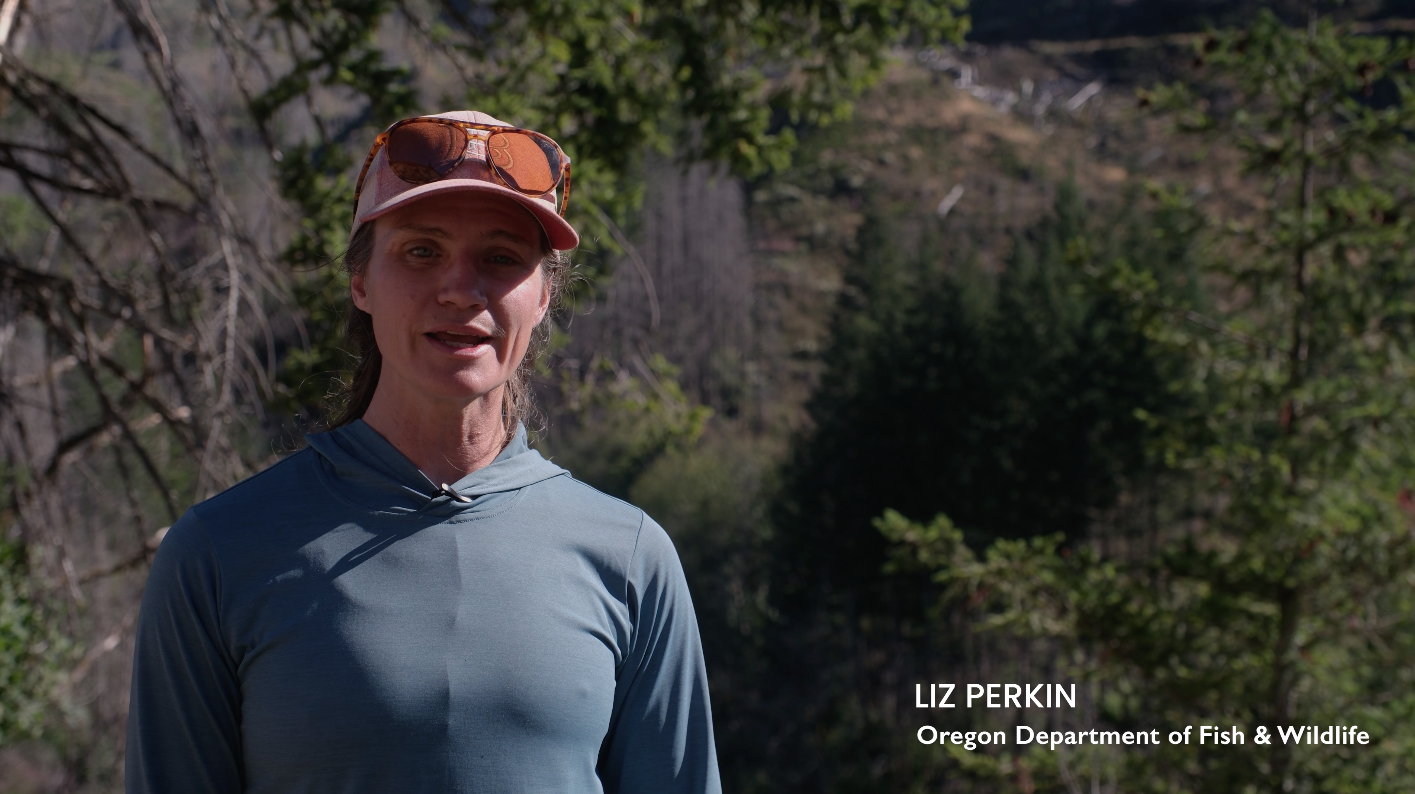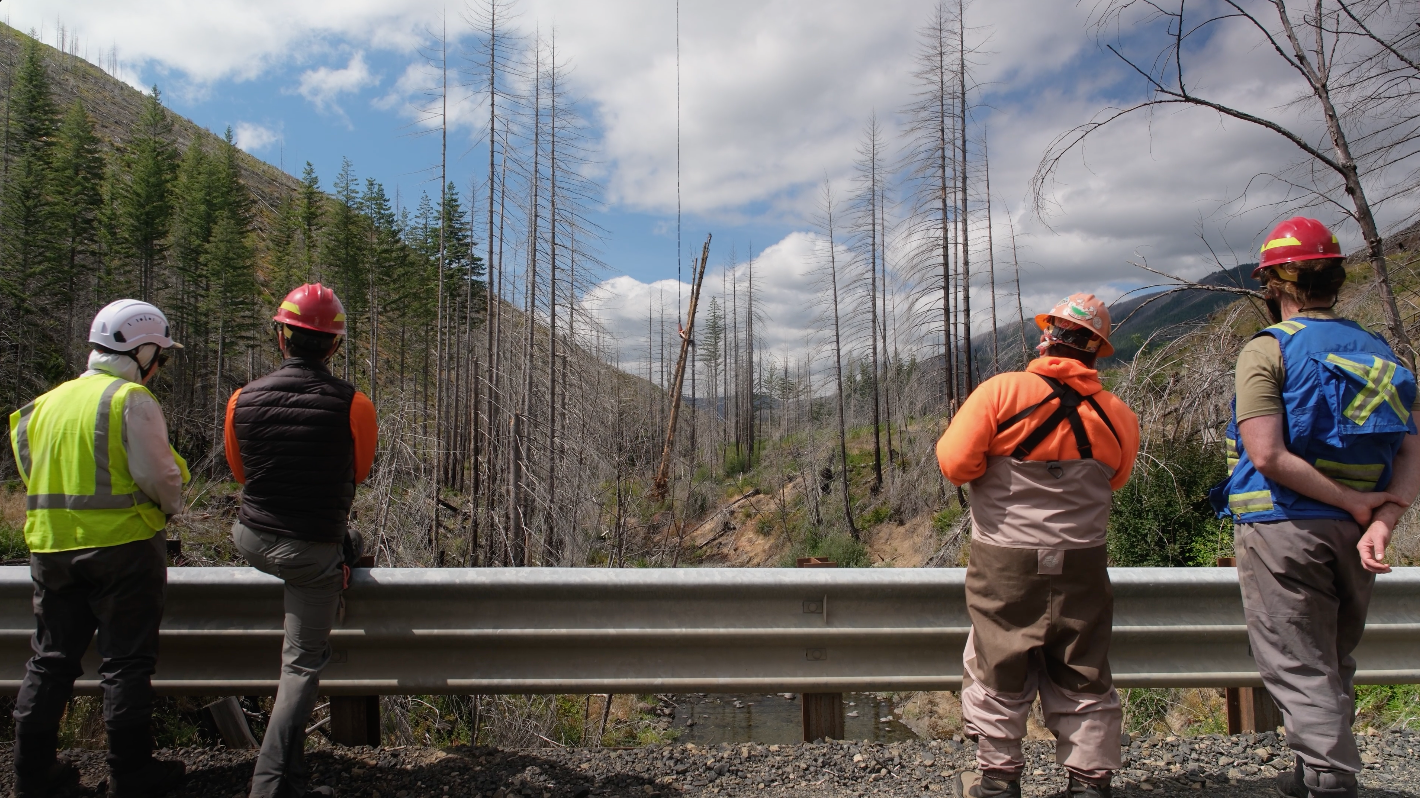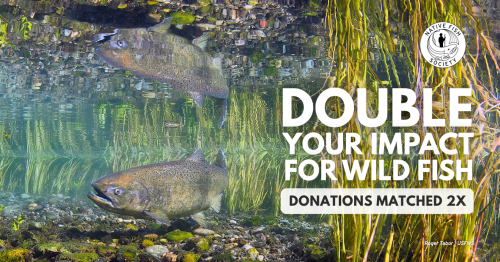
May The Fish Be With You
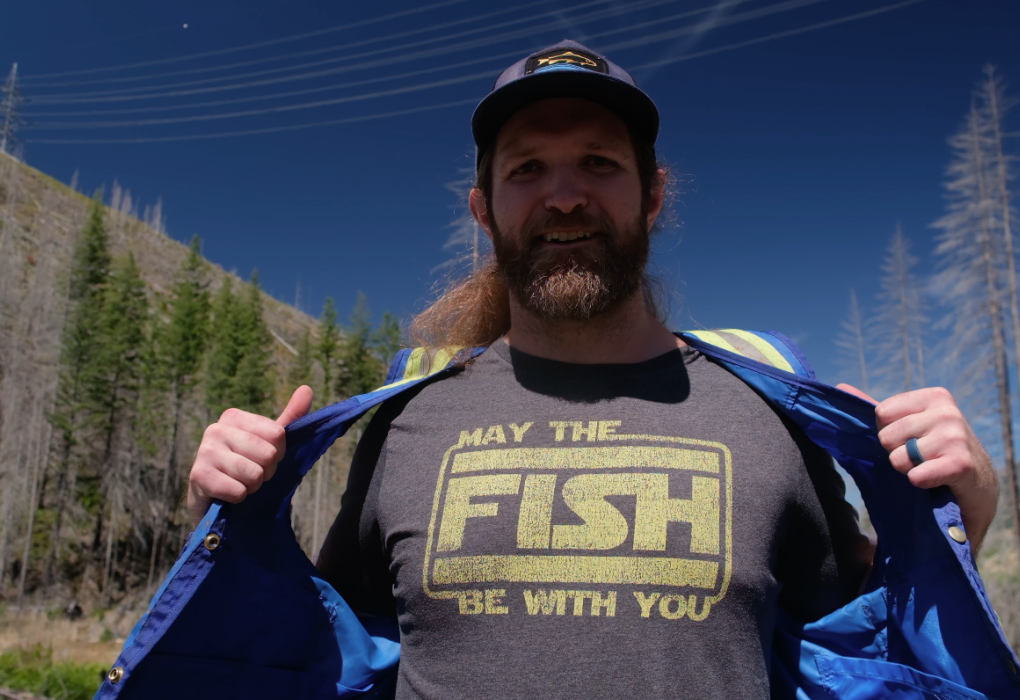 Peter Kauss, Hydrologist for the Bureau of Land Management and partner on the Molalla River Restoration Project
Peter Kauss, Hydrologist for the Bureau of Land Management and partner on the Molalla River Restoration Project

Native Fish Society and partners continue ongoing habitat restoration of the Molalla River
In August, Native Fish Society and a team of partners looked on as helicopters carefully placed large wood structures atop the otherwise bedrock substrate of the Molalla River. This was the latest milestone in our ongoing habitat restoration work on this lower Willamette tributary.
Background:
Native Fish Society is marking its third year leading habitat restoration projects in the Molalla River Watershed, an essential tributary of the Willamette River. As the only major undammed east-side tributary and a basin free of hatchery stocking since the late 1990s, the Molalla River provides crucial habitat for wild fish. However, historical logging practices prior to modern forest practice laws, mining, and levee construction have degraded fish habitat, simplified the river channel, and reduced its ability to support native fish populations.
Following the devastating wildfires of 2020, special funding from the Oregon State Legislature enabled the launch of a major restoration program in the Molalla River Watershed. Native Fish Society, in collaboration with project managers Molalla River Watch, the Oregon Department of Fish and Wildlife, the U.S. Bureau of Land Management, and private landowner Fruit Growers Supply Company, has been leading efforts to restore habitat. To date, the team has placed over 1,000 pieces of large wood across more than four miles of river, enhancing conditions for ESA-listed winter steelhead and spring Chinook. We have also led efforts to control invasive species in the riparian areas and partnered with volunteers to plant about 800 native plant and tree species.
Our Work
Over the course of two days this past August, large lincoln-log structures were placed in the upper Molalla River on Fruit Growers Supply Company property to enhance critical habitat for ESA-listed winter steelhead and spring Chinook.
“Before, now below these logs, this river was scoured to bedrock. Very little gravel or cobble. We worked with contractors to strategically place structures to build that base up again. When water comes up, it deposits sediment into these structures. Without it, water travels like a chute. Another advantage is that by slowing water down, we’re adding friction, causing the water to go more sideways, increasing subsurface flow. This acts like a spring, helping fish, wildlife, and providing downstream communities with cold, clean drinking water.” said Alex Worth, Executive Director of the Molalla River Watch and acting project manager. “We’ve created the start to the process.”
The process Worth speaks of is an attempt to recreate millennia of natural processes.
“Logging started in 1850. Aquatic restoration is helping with water quality, endangered fish, and replanting and reforestation,” said Peter Kauss, a Hydrologist for the Bureau of Land Management. “The experience has been rewarding, to see all of our different talents come together on this whole watershed restoration project.”
“This whole project, everything we’re seeing today, really traces back to the long-time river stewardship of Terre Rodgers and Tom Derry, building relationships through spawning surveys,” Dr. Liz Perkin, former NFS Northern Oregon Coordinator who is responsible for starting these grant-funded projects, in addition to growing up in the watershed, shared. “When the fires happened (Labor Day fires of 2020), Native Fish was in a good position to support ODFW in this restoration, and that led to this unique opportunity to restore this river.”
The Importance Of Partnership
A key component of this restoration work has been the partnership with Fruit Growers Supply Company, a private landowner that has not only provided access for restoration activities but has also played an active role in supporting the project.
“Fruit Growers Supply Company, and their foresters, have set a new standard for stewarding their land,” Worth said.
"We are proud to collaborate with organizations such as Native Fish Society," said Jim Crawford, Oregon Timberlands Manager for Fruit Growers Supply Company. "Having managed forestland for over 115 years, we have an incredibly rich history of conservation. Our commitment to sustainable forestry practices through third-party certification continues to grow alongside our long-term partnerships with such organizations.
Fruit Growers Supply Company loves to be a part of these types of projects simply because we’re able to give back even more to the land. The Molalla River watershed was incredibly devastated by the 2020 wildfires, and I am so proud of the restoration work that we have accomplished as a partner in this project. As forestland managers, we have excelled in successfully planting new forests on thousands and thousands of acres that were severely burned, but it’s only through partnerships such as these that we are able to truly make an immediate, positive impact for fish. This project faced so many hurdles from day one, and yet not a single member of the team was willing to give up. It took professionalism and sheer tenacity on each and every member of the team, day in and day out, to accomplish what we see here today.” Crawford said.
Looking Forward
Native Fish Society, alongside our amazing River Stewards and partners, will continue to work to restore the Molalla River ecosystem - to further restore, sustain, and enhance its native fish populations - through continued restoration, volunteer efforts, and policy protections.
Special thanks to all the incredible partners of this project, including:
Last but not least, thank you to Sean Burke for his incredible work to capture and share our project through this great video. You can learn more about him and see more of Sean’s work at https://www.prolificnorthwest.com/.
#########
About Native Fish Society
Guided by the best available science, Native Fish Society advocates for the recovery of wild, native fish and promotes the stewardship of the habitats that sustain them. Visit www.nativefishsociety.org for more information.
For additional media inquiries or photo requests, please contact:
Daniel Ritz
Northern Oregon Coordinator, Native Fish Society
Daniel@NativeFishSociety.org | 541.645.4989
Check out some screenshots of the video below!
